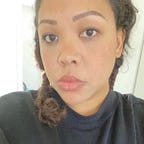Lessons From A Model Minority
I grew up unknowingly witnessing intersectionality at play through the struggles and triumphs of my mother. A small-framed Japanese woman, my mother is the strongest woman I have ever known. After divorcing my father, my immigrant mother would go off on her own with no college education, no specialization, no money, and three Black daughters to take care of and raise.
“Black and Japanese? Hmmm. Interesting combination.”
I am one of three daughters: Michiko (me), Aiko, and Emiko. We are all close in age and have the same Black father. My mother, also named Michiko, is from Japan. My father was in the navy, came from a middle-class family, and had a semi-famous mother, Laura Mae Gross. She was the owner of a blues club in Los Angeles for over 50 years.
My mother was a homemaker and artist. She came from a wealthy and famous family in Japan. Her grandfather had been mayor of Oomiya, Japan, her father was a well-known sumo wrestler (Wakabayama), and her mother was a club owner and beauty pageant queen. My parents’ marriage was unusual and unlikely.
The earlier part of our lives was spent on different military bases. We were “military brats.” We had what was considered an unusual family in the 1980s and early 90s. It was not commonplace to have kids that were mixed, especially our unique mix. Even with our unusual family, we had a nuclear family. They were an interracial couple, but he was in the military.
